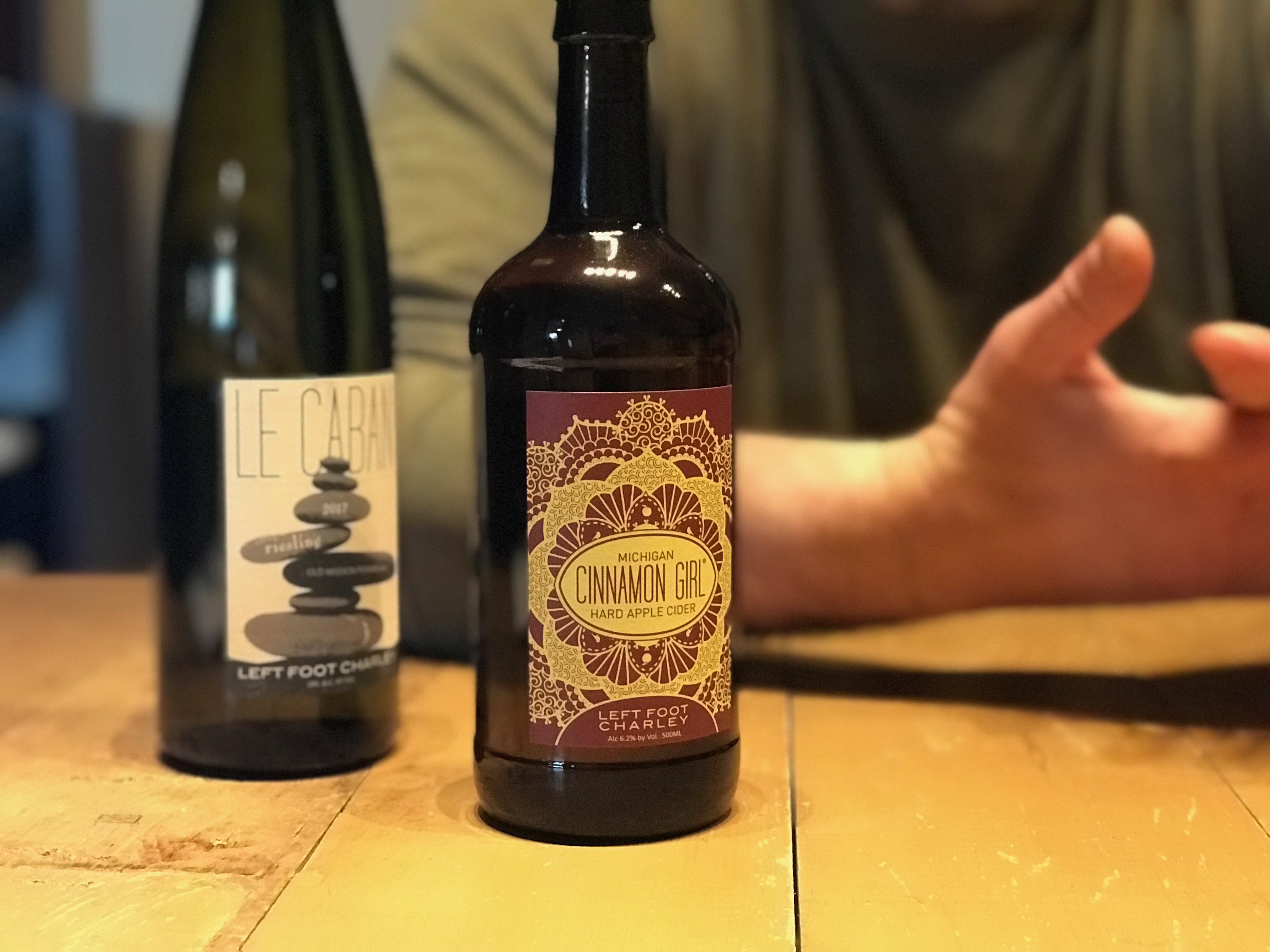| February 2019 | ||
| « Jan 2019 | News | Mar 2019 » |
February 26, 2019
Unpasteurized CREAM
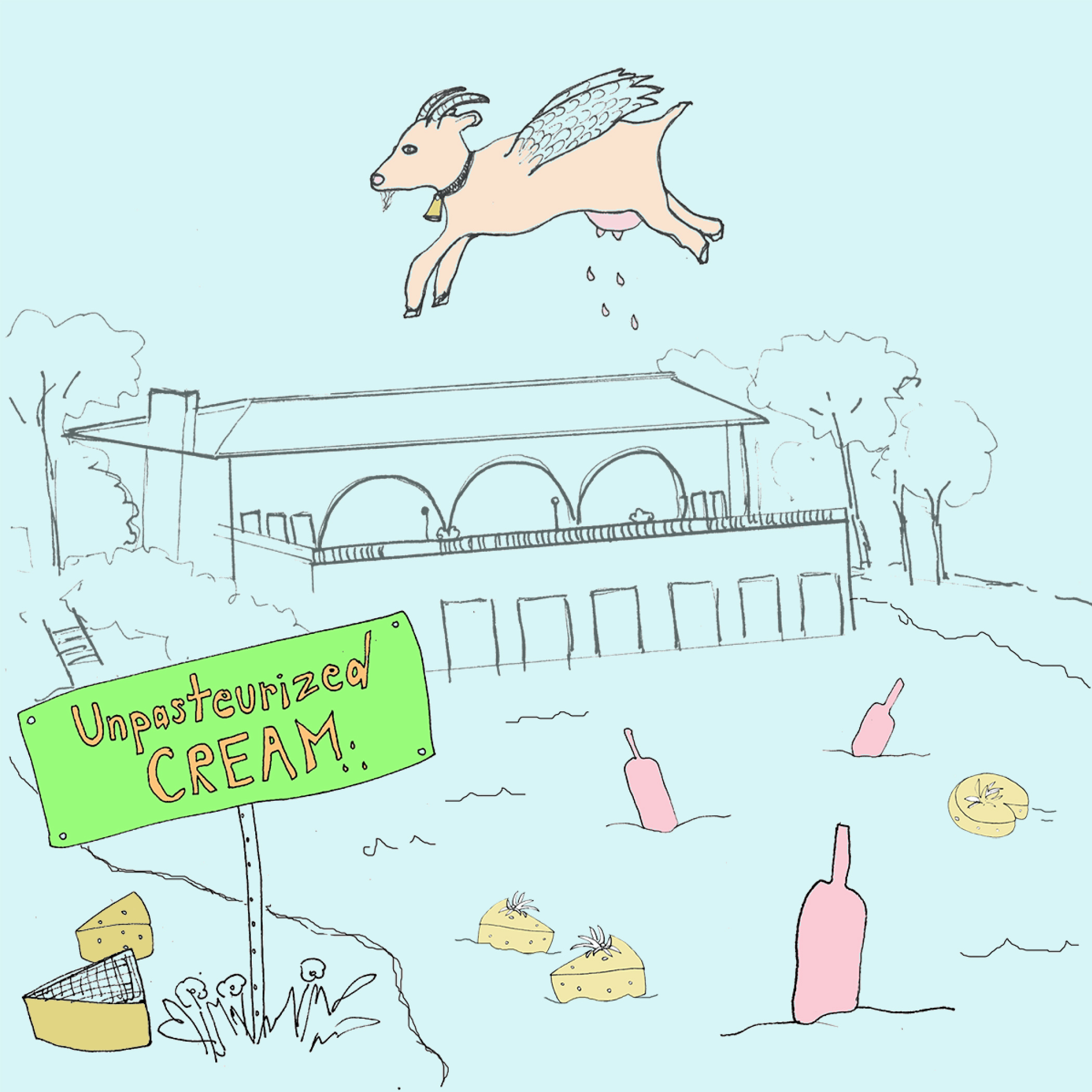
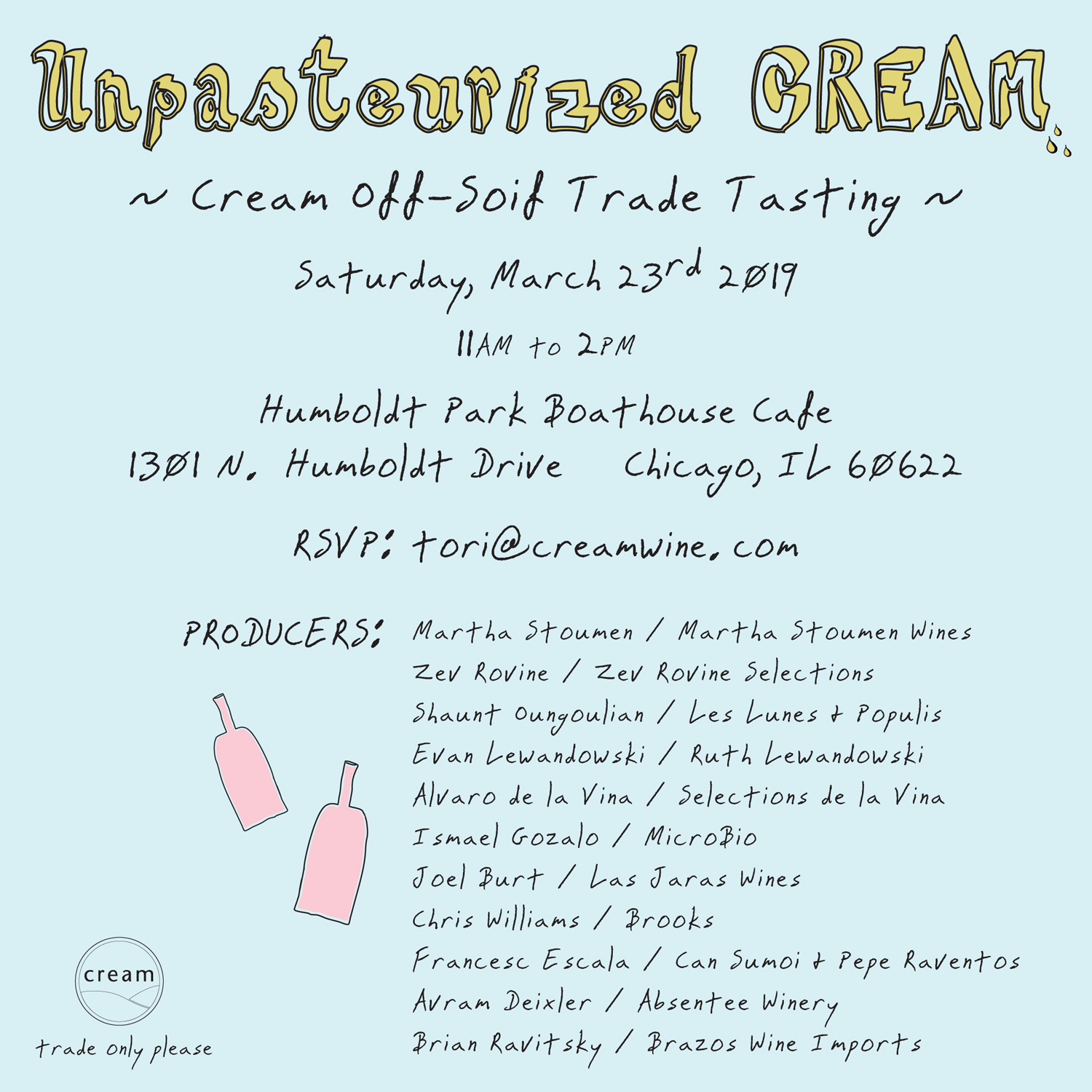
Invite artwork by our friend Catie Olson: http://www.catieolson.com/
February 20, 2019
FEATURED: People, Place and País: A New Era in Chilean Winemaking
There is a new era in Chilean winemaking - inspired by the region’s rich soils and old vines, and responsive to the increasing crises of climate change. This new generation of Chilean winemakers are pushing the boundaries of the Chilean wine industry, and Cream has worked with Brazos Wine Imports to showcase these entrepreneurial and experimental producers.
February 18, 2019
Drink like George - Madeira 101
 Drink like the birthday boy this Presidents’ Day!
Drink like the birthday boy this Presidents’ Day!
Did you know that George Washington drank Madeira every night with dinner? In fact, our Founding Fathers toasted with Madeira after signing the Declaration of Independence. So we celebrate the versatile and unspoilable fortified wine Madeira in honor of Presidents’ Day.
No matter what the cost, you probably wouldn’t take a gamble at an 1850 Bordeaux, but some restaurants serve Madeira wine that old or older, by glass! Why? Because this fortified pleasure has a longevity that is simply remarkable. The powerful aromas and vivid flavors last for centuries, and upon open, the wine can still last for years without losing character. A grand wine, it was the drink choice of our founding fathers, popularity higher than Bordeaux and Burgundy…and a wine deserving our recognition 600 years after the Portuguese settled the island of Madeira.
RARE WINE COMPANY REVIVES MADEIRA
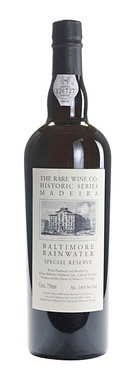 This fortified wine gets its name from the small island of Madeira, an autonomous region of Portugal off the northwest coast of Africa. During the 1600 and 1700s, Madeira was an important provisioning point for trade ships traveling to Americas and the East Indies, and shippers would load their boats with wine for the long trek. To avoid spoilage at sea, winemakers began adding a small amount of distilled alcohol made from cane sugar to stabilize the wine. Making their way through the tropics with this now fortified wine, sailors noticed that the intense heat in the hold of the ship deepened and developed its taste, thus ushering in a new era in Portuguese wine making. Today, Madeira wine makers employ temperature controlled barreling practices to replicate the holds of the ship.
This fortified wine gets its name from the small island of Madeira, an autonomous region of Portugal off the northwest coast of Africa. During the 1600 and 1700s, Madeira was an important provisioning point for trade ships traveling to Americas and the East Indies, and shippers would load their boats with wine for the long trek. To avoid spoilage at sea, winemakers began adding a small amount of distilled alcohol made from cane sugar to stabilize the wine. Making their way through the tropics with this now fortified wine, sailors noticed that the intense heat in the hold of the ship deepened and developed its taste, thus ushering in a new era in Portuguese wine making. Today, Madeira wine makers employ temperature controlled barreling practices to replicate the holds of the ship.
As America’s leading merchant of rare, old Madeiras, The Rare Wine Co. has been a major force behind Madeira’s recent revival in the marketplace — introducing a new generation of wine lovers to the wonders of vintage Madeira. Through the efforts of Rare Wine Co., we are able to bring you the Madeira wines of Vinhos Barbeito, D’Oliveira and RWC Historic Series.
Vinhos Barbeito is a relatively young producer compared to other companies (established 1946), but has an impressive collection of vintage madeira. Family owned and operated, Ricardo de Freitas is the current owner who brings energy and dynamism to the company. His madeira undergo the canteiro process.
D’Oliveira is one of the greatest of the classic Madeira shippers, and one of the few to survive from the pre-phylloxera era. Founded in 1820, and today housed in cellars that date from 1619, this small jewel of a company is still owned by the same family, its vineyard holdings built up over time through a series of marriages with other wine-producing families. But what is really extraordinary is that D’Oliveira has held on to many of its most famous vintages, creating a unique, and irreplaceable, stock of old wines. And remarkably they are all D’Oliveira wines, not purchased from other shippers or growers.
RWC Historic Series represents affordable Madeiras that reflect the style and complexity of the great vintage wines. Rare Wine Company developed these wines with the dream to introduce Madeira to a broader market as well as teach Americans about the history of the wine. Right up until the twentieth century, Madeira was a popular wine in the upper class of American social life. Cities such as Boston, Charleston, New York, Savannah and Philadelphia had Madeira parties. Each city seemed to favor a particular style; therefore, Rare Wine Company named the nonvintage varietal Madeira after these American cities with a nod to the style historically preferred there. Ricardo de Freitas of Vinhos Barbeito produces the wine.
THE NOBLE GRAPES OF MADEIRA - SERCIAL, VERDELHO, BOAL, MALVASIA
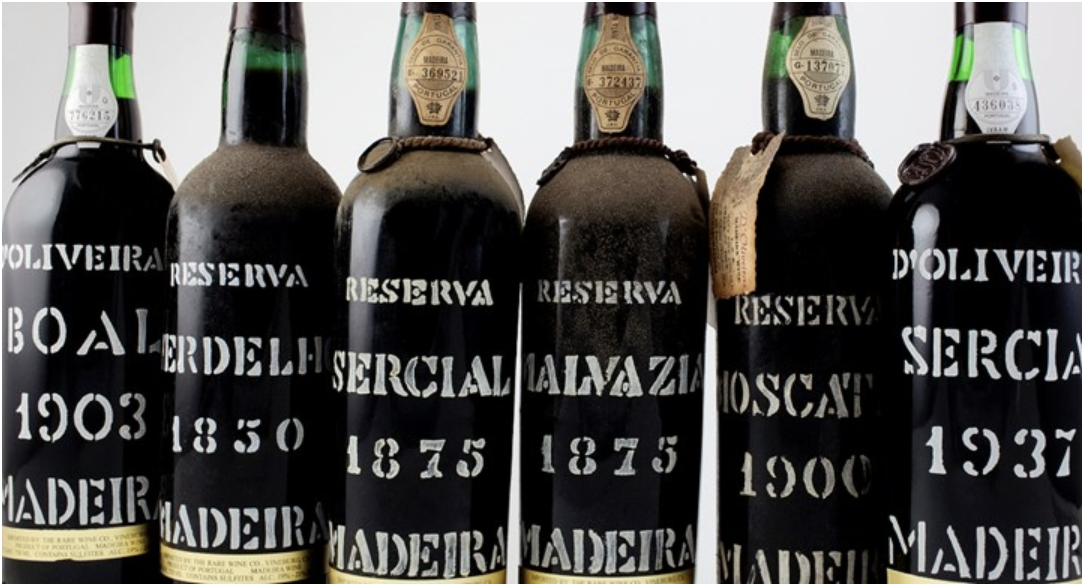 Vintage Madeira, or Frasqueira, and the wines produced by the solera system are Madeira’s claim to greatness. These wines are not simply a selection of the best wines from the best years, but they are made from particular ‘noble’ grape varieties after which the wines are named. These names not only describe the grape variety, but also describe the style.
Vintage Madeira, or Frasqueira, and the wines produced by the solera system are Madeira’s claim to greatness. These wines are not simply a selection of the best wines from the best years, but they are made from particular ‘noble’ grape varieties after which the wines are named. These names not only describe the grape variety, but also describe the style.
Sercial is the driest of the wines. It is light in color, full-bodied and refreshing.
Verdelho is a medium dry wine. It is golden in color.
Boal is a medium rich wine. It is full-bodied and fruity.
Malvasia is the richest and sweetest style of Madeira wine. It is dark in color, full-bodied and aromatic.
Finally, Terrantez. This wine can produce two styles of Madeira - rich and sweet or dry with a certain bitterness at the end. With most vines of this grape falling victim to phylloxera, Terrantez Madeira is hard to come by, but efforts are underway to replant the variety.
February 12, 2019
New Year, New Look
Move aside white label! The new Sean Minor 4B California Tier now has a colorfully bold square logo on the front label. Sometimes just a splash of color will do the trick! The Sean Minor Classic Tier has also gotten an upgrade; a beautifully defined black border leads your eyes to the trusted Sean Minor producer name and logo. The variety is now written in a red cursive front furthering the elegance.
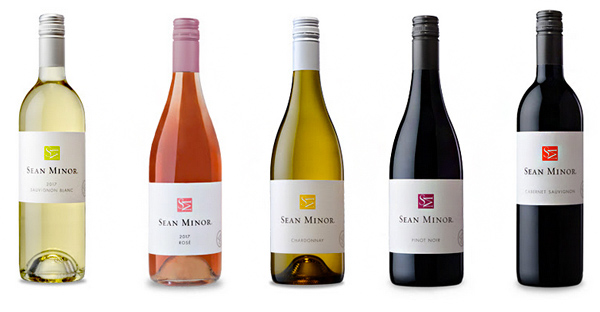
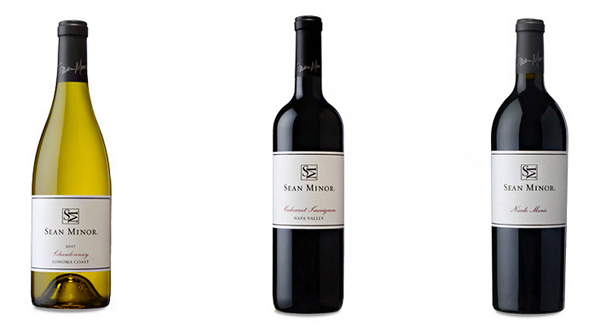
February 07, 2019
Peter Sisseck - A Ribera del Duero Champion
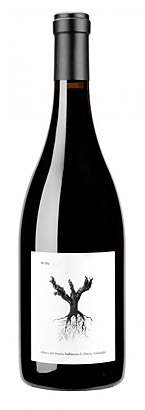 In 1993, when Danish winemaker Peter Sisseck first arrived in Ribera del Duero - the heart of Spain’s Tempranillo production two hours north of Madrid - he saw potential for quality in a land of quantity.
In 1993, when Danish winemaker Peter Sisseck first arrived in Ribera del Duero - the heart of Spain’s Tempranillo production two hours north of Madrid - he saw potential for quality in a land of quantity.
With hot, dry Mediterranean summers and unpredictable long, hard winters, Ribera del Duero is an unexpecting competitor to the nearby Rioja. These extremes in climate, however, have proven to be the perfect storm for vast grape production, and local growers had traditionally been paid by the ton for their harvests.
Trained in winemaking in Bordeaux and inspired by his garagiste friends in France, Sisseck saw an opportunity in Ribera del Duero to push old-vine Tempranillo to its upper limits. Sisseck found a group of old vines and names the project Pingus, a tribute to his childhood nickname. When a lunchtime tasting with Robert Parker brought an early Pingus vintage of PSI a 96-100 point score, the world paid notice, not only to Sissick, but to the burgeoning Ribera del Duero. Biodynamic since 2001, Pingus is the embodiment of Sissick’s old-word training and utopian vision for the region.
The fresh and fruit-forward 2016 PSI continues to demonstrate Tempranillo’s capacity for excellence. 2016 is a fresh vintage, and the wine reflects it with precision and elegance on the palate. According to Sisseck, 2016 is the PSI he always dreamt about.
February 05, 2019
All Things Cider with Left Foot Charley's Bryan Ulbrich
From the Roman’s discovery of fermented apples during their first rendezvous to England in 55 BC, to the cider making tools brought over on the Mayflower, it’s no denying that hard cider has history. Requiring nothing but apples and time, stateside hard cider was the drink of the American farmer, soon to be overshadowed by barley, rye and corn during the Industrial Revolution, and eventually all but eliminated during Prohibition.
Cider did manage to stick around though, making it’s way to our shelves in the form of the super sweet, gluten-free alternative to beer that we are all too familiar. The last decade, however, has seen a revival of cider consumption and production across the United States - with cider bars and cideries popping up across the country. Americans have been re-introduced to cider, and we cannot get enough. It’s no surprise that the big guys have caught on as well, with the majority of cider in the US coming from the likes of large brands owned by big beverage companies.
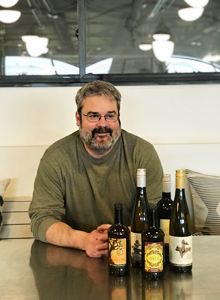 Despite big name labels filling up the shelves, small production cider makers continue to grow and prove just how complex and terroir-driven cider can be.
Despite big name labels filling up the shelves, small production cider makers continue to grow and prove just how complex and terroir-driven cider can be.
One of these producers is Bryan Ulbrich - winemaker, cider maker, and owner of Michigan’s own Left Foot Charley. The state’s first “urban winery,” Bryan owns no palatial estate - instead he sources fruit from small, exceptional vineyards in Northern Michigan. But while Bryan’s wines are leading the way to define terroir in Northern Michigan, his orchard focused, low-intervention cider philosophy is a revival of Michigan’s rich history in cider making.
We caught up with Bryan at Cream to talk all things cider and learned quite a lot about the past, present and future of Michigan cider.
How did you get into cider making, and how long have you been making cider?
I started making apple wine (basically higher alcohol cider) but got into the classic hard cider production in 2008.
Left Foot Charley’s wine is sourced from the vineyards of some of Northern Michigan’s most significant growers. What kind of apples do you use, and where do you get them from?
We work directly with four local farms and one farm in the Lansing area that helps us source fruit from there and the Grand Rapids area. The apples trees that we source from are on average about 20 years old. It takes close to 7 years for a tree to start producing good fruit. For regular apple consumption, most apple trees are ripped and replaced every 30 years. We instead look towards Europe, where some cider producers are sourcing fruit from trees that are between 100 and 150 years old like Eric Bordelet. I’m hoping to someday source fruit from healthy trees that are over 30 years, and help the MI cider industry better understand how the age of a tree can impact cider characteristics.
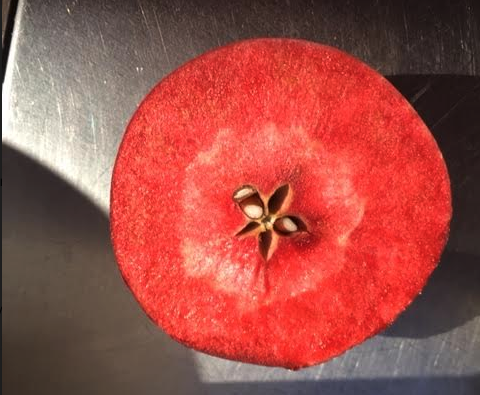 Varieties we use include Jonathan, Ida Red, Empire, Spy, Macs, Greening, Golden Russet, Porter’s Perfection, Ashmead’s Kernel, Wickson, Red Harrelson, Brown Snout, Baldwin, Yarlington Mill, Dabinett, Benet Rouge, Esopous Spitzenberg, Winter Banana, Winesaps, Cortland, Harry Master’s Jersey, Chisel Jersey, Arkansas Black, Otterson* (pictured cut open on the right) and others I am unintentionally forgetting right now.
Varieties we use include Jonathan, Ida Red, Empire, Spy, Macs, Greening, Golden Russet, Porter’s Perfection, Ashmead’s Kernel, Wickson, Red Harrelson, Brown Snout, Baldwin, Yarlington Mill, Dabinett, Benet Rouge, Esopous Spitzenberg, Winter Banana, Winesaps, Cortland, Harry Master’s Jersey, Chisel Jersey, Arkansas Black, Otterson* (pictured cut open on the right) and others I am unintentionally forgetting right now.
*The Northman Chicago is getting two kegs of LFC’s Otterson Cider.
What characterizes a good apple for making cider?
I like acid. We are finding that the bittersharps that grow well up here provide good supporting tannins and higher sugars as well. In the end I believe it comes down to a blend. There are so many possibilities with tweaking the balance. It’s like playing with an equalizer on an old school stereo. Over all the fruit must be ripe regardless of the variety. We want to avoid unripe acid and starchiness.
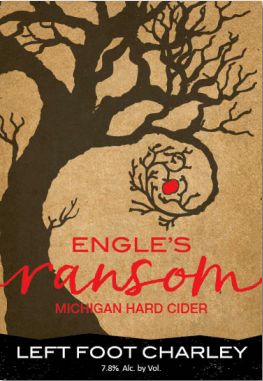 People planting new orchards are now considering which varieties would be best for making cider as they section off these areas from commercial plots. For example, our Engle’s Ransom cider is sourced from an orchard in Grand Traverse County. Farmer Ken Engle has planted 35 different varieties to experiment in years to come with which apples work best for cider making.
People planting new orchards are now considering which varieties would be best for making cider as they section off these areas from commercial plots. For example, our Engle’s Ransom cider is sourced from an orchard in Grand Traverse County. Farmer Ken Engle has planted 35 different varieties to experiment in years to come with which apples work best for cider making.
Does winemaking influence your cider making? If yes, how?
Yes very much. We approach apples with the same reverence that we do grapes. Each variety, terroir, and vintage has an impact on the possible flavor outcome. It is our job to discover and release this potential. While it is currently illegal to print the year on hard cider, ours are vintage driven just like wine (look out for batch 2019!).
The techniques we use are very similar to our Pinot Blanc and Riesling fermentation and aging protocols. Like our wines, our ciders are fermented with a combination of “volunteer vineyard yeast” (aka native yeast) and selected yeast, and we halt the fermentation to preserve the natural sweetness whenever possible. While a recent trend in cider has been the addition of different flavor profiles like Cinnamon Girl, our orchard-driven ciders tend towards a cleaner, more aromatic profile. Recently, we have also been experimenting with barrel aging our ciders.

